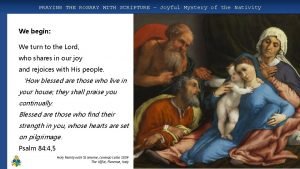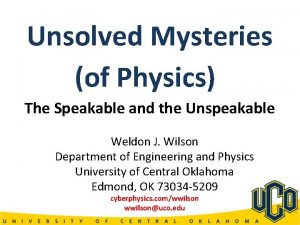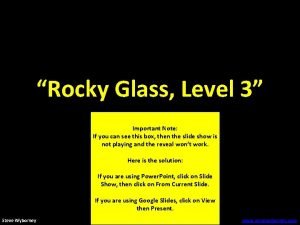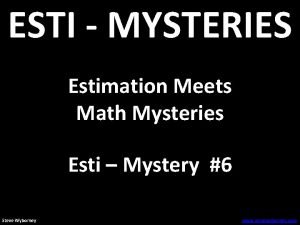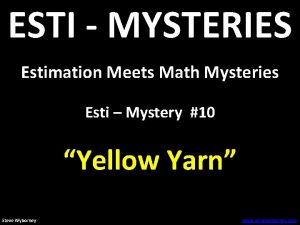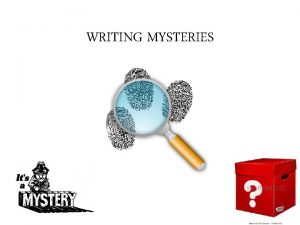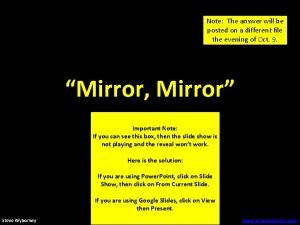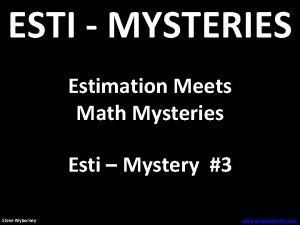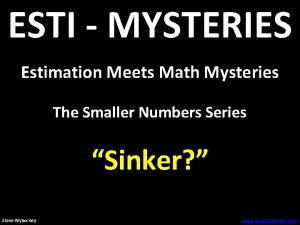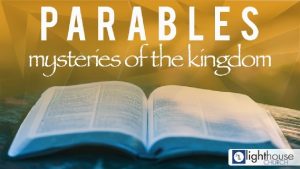WRITING MYSTERIES What is mystery writing Mystery writing









- Slides: 9

WRITING MYSTERIES

What is mystery writing? Mystery writing is a special type of writing that is plot-driven in nature. Mystery stories are fast-paced and keep the readers’ interest by creating a good plot and building suspense. Good mysteries keep a reader wondering while solving the crime (if there is one). Most mysteries keep a reader in the dark until the very end.

What are the characteristics of a good mystery? § Create a setting that will help build suspense. § Develop interesting characters and develop them thoroughly. § Mystery stories use suspense. Suspense is a state or condition of mental uncertainty or excitement, as in awaiting a decision or outcome, usually accompanied by a degree of anxiety. In other words, you want the reader to be on the edge of his or her seat.

What are the characteristics of a good mystery? (cont’d) § Create a strong plot that involves problem-solving. o Most mystery stories include a plot involving the following ideas: § A problem that needs to be solved § An event that cannot be explained § A secret § Something or someone who is lost or missing § A crime that has been committed

What are the characteristics of a good mystery? (cont’d) § Give clues that help the reader solve the mystery. § You can give clues by the things people say or do or objects that are found § Use distractions that lead an investigator/ reader off the path. Distractions often make it more difficult to solve a mystery and make the storyline more interesting. These are deliberately put into the story to disguise the true solution and to make the reader think that something else is going on.

Most mysteries are set up in the following format: § Introduction: create a scene, meet characters, be introduced to the problem. § Body: The plot is fully developed and someone is working to solve the mystery. § Conclusion: The mystery is solved.

Terms commonly used in mystery-writing • Alibi: An excuse that an accused person uses to show that he or she was not at the scene of the crime (the alibi is typically a person who can prove that the accused was not at the scene of the crime) • Breakthrough: A discovery that helps solve the crime • Clue: A fact or object that gives information toward solving the crime

• Detective: An investigator looking for and gathering clues • Evidence: A thing or statement that helps to prove who committed the crime • Hunch: A guess or feeling not based on facts • Motive: A reason that a person does something

• Distraction: A false clue that throws the investigator off track • Suspect: Person who has a motive to have committed a crime • Witness: Person who has knowledge about a crime.

